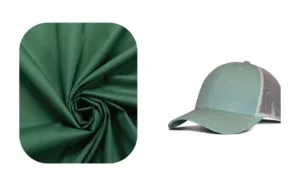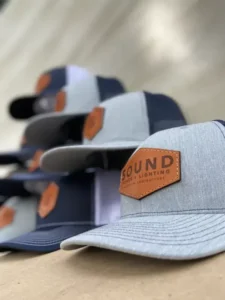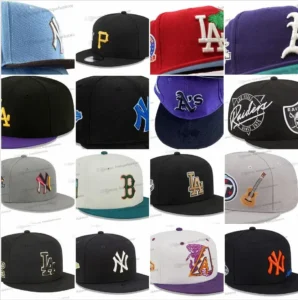Choosing the right material for hat brims isn’t just about aesthetics. Whether you’re designing a trendy fashion hat or a durable outdoor cap, the brim material affects both the functionality and the look of the hat. It plays a crucial role in shaping the hat, ensuring durability, and providing the necessary protection from the sun or rain. But what exactly makes the best material for hat brims?
The most commonly used materials for hat brims are felt, straw, cotton, polyester, and leather. These materials differ in strength, flexibility, and functionality, each suited for different types of hats and weather conditions. This guide will explore how each material impacts your hat’s style, functionality, and sustainability.
As we explore the different types of brim materials, think about your specific needs: whether it’s for a summer beach hat or a sturdy winter cap, there’s a material for every occasion. So, let’s dive deeper into what makes these materials so important in hat design and functionality.
1. What materials are commonly used for hat brims?
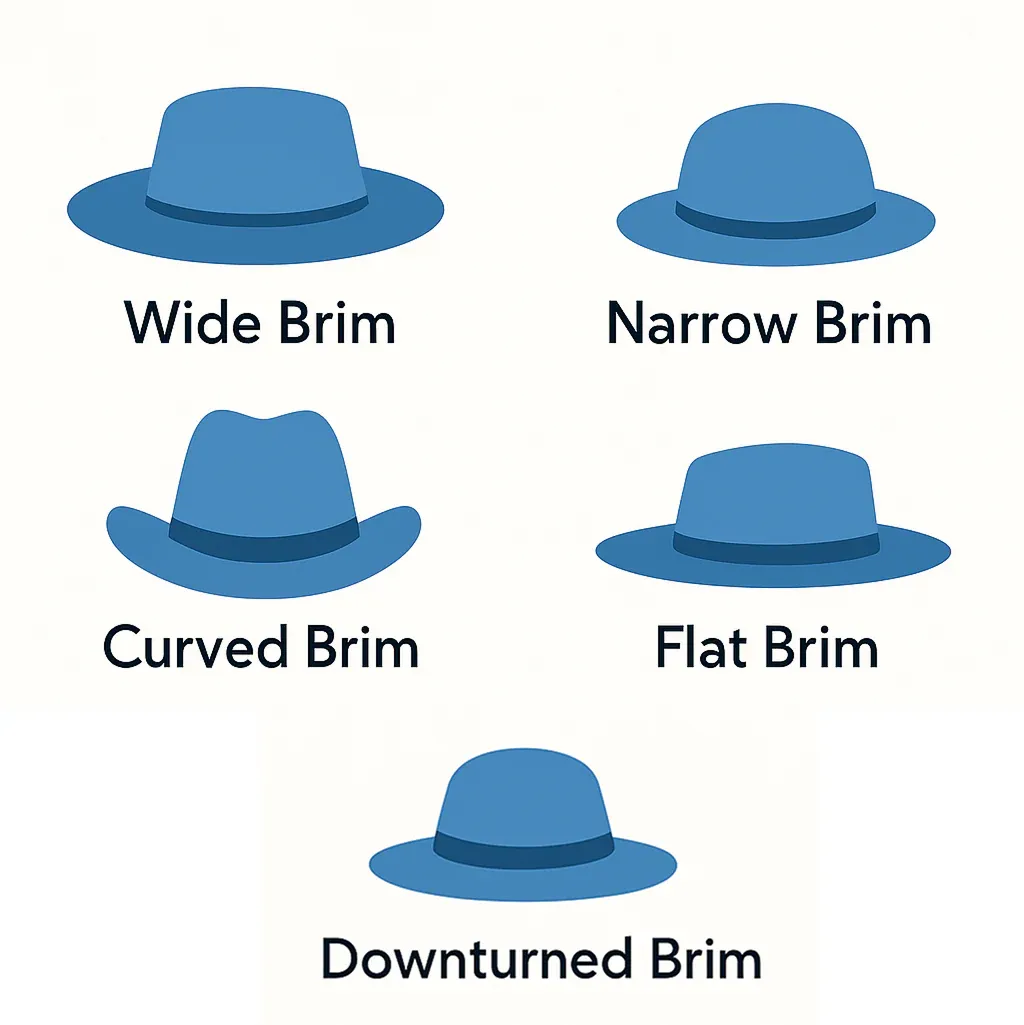
Hat brims come in a variety of materials, each with its own strengths and limitations. The material chosen will determine the look, feel, and utility of the hat, and it’s essential to select one that aligns with the desired purpose and design.
The most common materials for hat brims include felt, straw, cotton, polyester, and leather. These materials provide different textures, durability, and suitability for various types of hats and occasions.
- Felt: Felt is a traditional choice for many types of hats, including fedoras, trilbys, and other classic designs. Felt brims are durable and have a soft, smooth texture that can be shaped into various styles. This material is particularly popular in cooler climates due to its ability to retain warmth.
- Straw: Straw brims are most commonly used in summer hats such as wide-brimmed sun hats or beach hats. Straw is lightweight, breathable, and provides excellent sun protection. However, it’s less durable than other materials and can become brittle over time with exposure to moisture.
- Cotton: Cotton is often used for casual hats like baseball caps or bucket hats. It is lightweight, breathable, and soft to the touch, making it a good option for everyday wear in warm weather. While it may not provide the same level of structure as felt or leather, cotton is versatile and comfortable.
- Polyester: Polyester is a synthetic material often used in modern, functional hats. It is highly durable, resistant to water, and easy to maintain. Polyester is commonly used in outdoor sports hats, such as those for hiking or fishing, as it can withstand various weather conditions.
- Leather: Leather brims are often found in fashion-forward or outdoor hats, including cowboy hats and certain stylish fedoras. Leather provides structure, durability, and a distinctive look, but it can be heavy and requires regular maintenance to keep it looking good.
| Material | Common Uses | Pros | Cons |
|---|---|---|---|
| Felt | Fedoras, Trilbys | Durable, warm, versatile | Can lose shape over time |
| Straw | Beach hats, Sun hats | Lightweight, breathable | Breaks down in wet conditions |
| Cotton | Baseball caps, Bucket hats | Soft, breathable, affordable | Less structured |
| Polyester | Sports hats, Outdoor caps | Durable, moisture-resistant | Can feel less breathable |
| Leather | Cowboy hats, Fashion hats | Stylish, durable | Heavy, requires care |
2. Which materials provide the best durability and strength for hat brims?
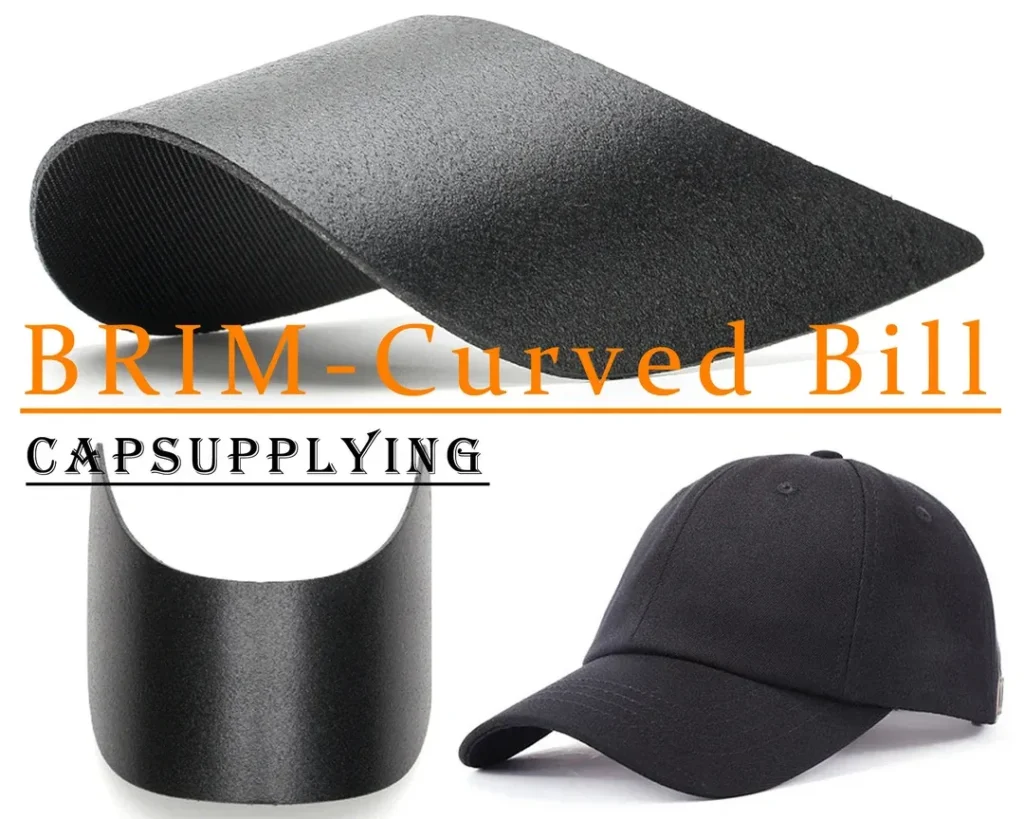
Durability and strength are key factors in choosing the right brim material, especially for outdoor activities or hats that need to withstand various environmental conditions. Some materials offer a high level of durability and can maintain their shape over time.
Felt, leather, and polyester are some of the most durable materials used for hat brims. They are designed to withstand the elements, maintain their shape, and last for a long time, making them ideal for hats that require strength and longevity.
- Felt: Felt is a durable material, often made from wool or synthetic fibers, that provides strength and structure to the brim. It’s perfect for formal hats that need to maintain a crisp, clean appearance over time. However, felt can be prone to losing its shape if exposed to excessive moisture.
- Leather: Leather brims are incredibly strong and resistant to damage. They offer a rugged and stylish appearance, especially for outdoor hats like cowboy hats. Leather brims hold their shape well and age beautifully over time, developing a unique patina with use.
- Polyester: Polyester brims are known for their outstanding durability. This synthetic material resists stretching, shrinking, and fading, making it an excellent choice for sports and outdoor hats. Polyester can withstand tough weather conditions and is resistant to moisture, unlike natural fibers.
| Material | Durability | Best Use | Limitations |
|---|---|---|---|
| Felt | High | Formal, cold weather hats | Sensitive to moisture |
| Leather | Very High | Outdoor, rugged hats | Requires care and maintenance |
| Polyester | Very High | Sports, casual hats | Can feel less breathable |
3. How does the material of the brim affect the hat’s style and functionality?
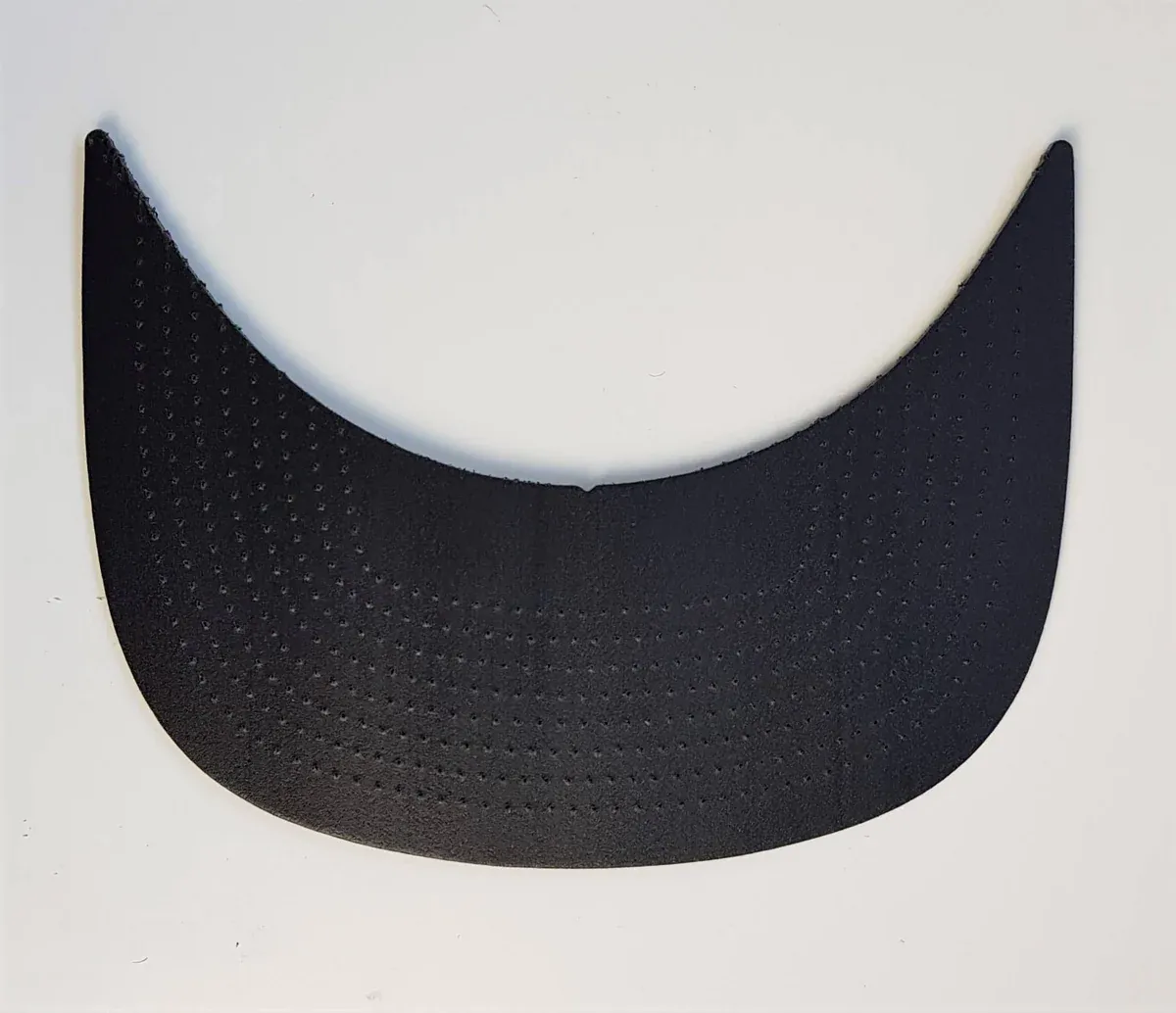
The material chosen for the brim can significantly influence both the aesthetic appeal and functionality of a hat. From the sleek look of felt to the casual style of cotton, each material brings a unique touch to hat design.
Brim material impacts the style and functionality of a hat. Felt gives a polished and structured look, while straw adds a relaxed and breathable feel. Leather brings a rugged, durable edge, and polyester offers practicality for active wear.
- Felt: Felt creates a sleek, structured look, often used in fashion-forward hats like fedoras and trilbys. The material gives hats a refined appearance, perfect for formal occasions or winter wear. It provides good sun protection and warmth, making it both stylish and functional.
- Straw: Straw brims provide a casual, summery vibe, making them perfect for beach hats, sun hats, and garden parties. They’re lightweight, breathable, and ideal for hot climates, but they lack the rigidity of other materials. The flexibility of straw allows for a more relaxed, comfortable style.
- Cotton: Cotton hats are typically casual and comfortable, making them ideal for everyday wear, especially in warm weather. Cotton brims can be soft and flexible, providing a laid-back, unstructured look. The material is more functional than fashionable, but it works well for casual activities.
- Leather: Leather brings a bold, rugged aesthetic to hats. Its durable nature makes it perfect for outdoor activities, where functionality is key. Leather’s sleek finish is also appealing for fashion enthusiasts, and its structure helps maintain the hat’s shape and longevity.
| Material | Impact on Style | Functionality | Best For |
|---|---|---|---|
| Felt | Polished, structured | Warmth, formal style | Winter, formal events |
| Straw | Casual, relaxed | Breathability, comfort | Summer, outdoor, beach hats |
| Cotton | Casual, soft | Comfort, flexibility | Everyday wear, casual hats |
| Leather | Rugged, bold | Durability, structure | Outdoor, fashion-forward hats |
4. What is the role of flexibility in hat brim materials?
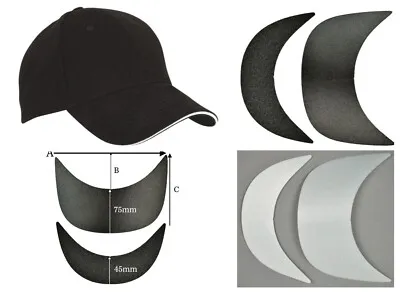
Flexibility plays a key role in the comfort and design of a hat. Depending on the desired look and function, flexible materials can provide a relaxed, adaptable fit, while stiffer materials maintain shape and structure.
Flexible brim materials like cotton and straw are ideal for casual, comfort-focused hats, while stiffer materials like felt and leather maintain structure and style for more formal or durable hats.
- Straw: Straw brims offer significant flexibility, making them ideal for wide-brimmed sun hats and beach hats. The flexibility allows for a more adjustable and comfortable fit, but this can compromise its structural integrity if not treated carefully.
- Cotton: Cotton brims are naturally flexible, which makes them perfect for hats that need to bend and adjust to the wearer’s shape. While this makes cotton hats comfortable, it can cause the brim to lose its shape over time, especially with frequent use.
- Felt and Leather: Felt and leather brims are typically stiffer and retain their shape for longer. This makes them ideal for hats that need a defined look, such as fedoras or cowboy hats. The rigidity helps the hat maintain its structure, even in windy or active conditions.
| Material | Flexibility | Impact on Fit | Best For |
|---|---|---|---|
| Straw | High | Relaxed, adjustable | Sun hats, beach hats |
| Cotton | Moderate | Comfortable, adaptable | Casual, everyday hats |
| Felt | Low | Structured, formal | Fashion hats, winter wear |
| Leather | Low | Stiff, durable | Outdoor hats, stylish hats |
5. Are there eco-friendly materials suitable for hat brims?
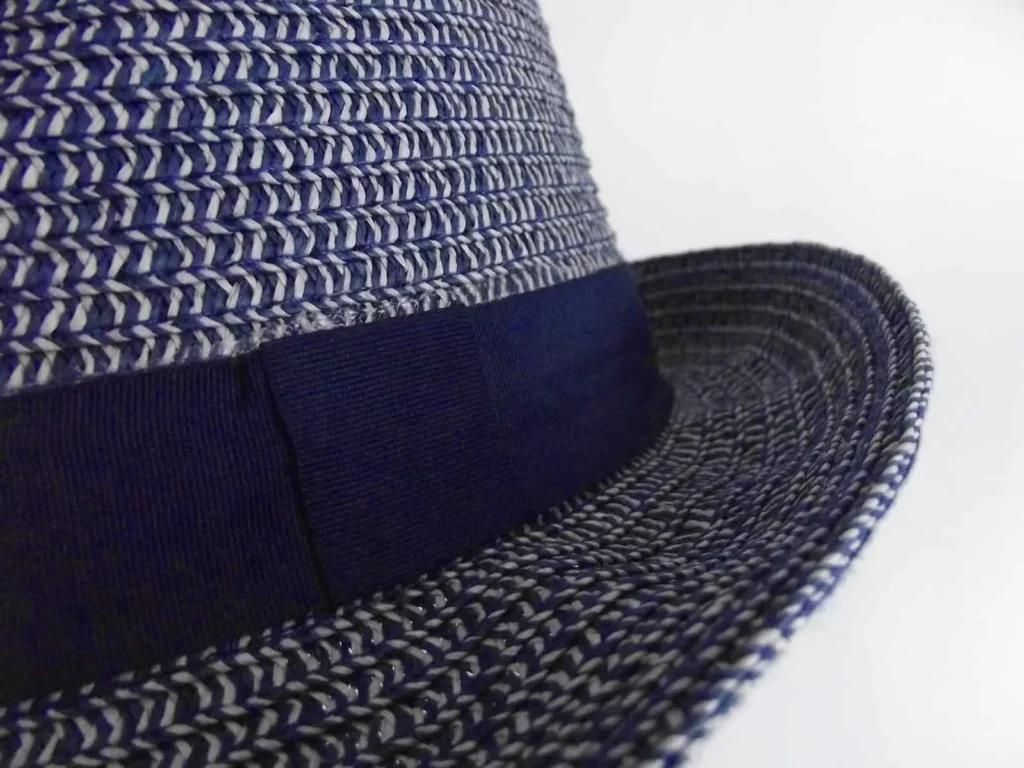
As sustainability becomes more important to consumers, many are seeking eco-friendly materials for their fashion choices, including hats. The good news is that there are a number of environmentally friendly options for hat brims.
Eco-friendly materials like recycled polyester, organic cotton, and natural fibers such as bamboo and hemp can be used for hat brims. These materials offer durability and style while being more sustainable for the environment.
- Recycled Polyester: Recycled polyester is made from plastic bottles or other waste materials, making it a sustainable alternative to virgin polyester. It offers the same durability and moisture-resistance but with a lower environmental impact.
- Organic Cotton: Organic cotton is grown without synthetic fertilizers or pesticides, making it an eco-friendly option for casual hats. It’s breathable, comfortable, and biodegradable, helping reduce environmental harm.
- Bamboo and Hemp: Bamboo and hemp are both natural fibers that offer a sustainable alternative for hat brims. These materials are durable, lightweight, and biodegradable, making them ideal choices for eco-conscious consumers.
| Eco-Friendly Material | Source | Benefits |
|---|---|---|
| Recycled Polyester | Post-consumer plastic waste | Durable, sustainable, moisture-resistant |
| Organic Cotton | Pesticide-free farming | Biodegradable, breathable |
| Bamboo/Hemp | Natural plant fibers | Lightweight, durable, eco-friendly |
In conclusion, the material used for hat brims significantly impacts the hat’s style, durability, and functionality. Whether you’re looking for a flexible, breathable option like straw or a durable, structured choice like leather, there is a material for every need. If you’re interested in custom hats made from high-quality materials, Kinwin offers tailored solutions that combine style, sustainability, and durability. Contact us today to get started on your custom hat order!



